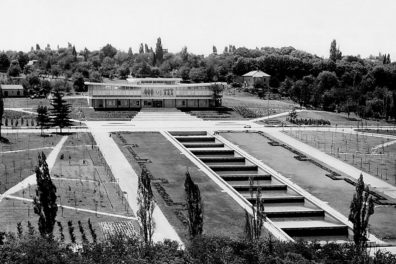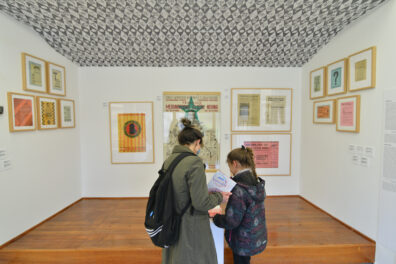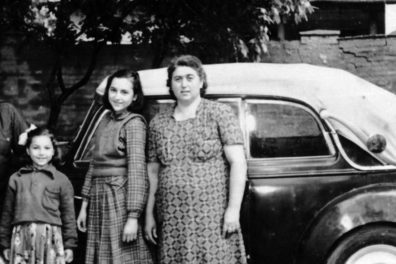
Ivan Ribar – a biography
Dr Ivan Ribar was born on 21 January 1881 in Vukmanić, near Karlovac. He studied law in Vienna, Prague and Zagreb. He was among the Croatian progressive youth, and in 1906 he was one of the founders of the Croatian Progressive Democratic Party, which fought for the national unity of Croats and Serbs and was a member of the Croatian-Serbian party coalition. He earned his doctorate in law in 1909 in Zagreb.
During the World War I, he was drafted for the Austro-Hungarian Army. From 1915, he was a deputy in the Croatian Parliament, and in October 1918, he took part in the establishment of the National Council of Slovenes, Croats and Serbs.
After the formation of the Kingdom of SCS, he formed the Democratic Party with other members of the Croatian-Serbian coalition. In 1919, he was elected vice president of the Provisional People’s Presidency (PPP). Having been elected a member of the Constituent Assembly, he was appointed the president. He held that position until the St Vitus Day Constitution was enacted in 1921, and then, he was the president of the National Assembly until October 1922.

King Alexander, surrounded by members of the Government and the presidency of the National Assembly, takes the oath to the Constitution at the ceremonial session of the National Assembly, Belgrade, 6 November 1921. Dr Ribar is the furthest one from the King, on the right, facing the camera (photographer: Milan Savić)
Since 1923, the Ribar family lived in Belgrade, first in the Sugar Factory in Čukarica, and later in Francuska Street. Besides politics, Dr Ivan Ribar was active in the work of social organizations: he was a member of the Sokol Association of Yugoslavia, as well as a member of the board and president of the “Sokol I” society.
Following the introduction of the 6 January Dictatorship in 1929, and until 1941, Ivan Ribar defended dozens of accused communists before the State Court for the Protection of the State. Among them were Svetozar Vukmanović, Ivan Milutinović, Moša Pijade, Vladimir Bakarić, as well as his oldest son Ivo Lola Ribar.

The Ribar family on vacation in the 1930s. On the far right are Ivo Lola Ribar and Jurica Ribar, sons of Antonija and Ivan Ribar (wearing hat).
After the parliamentary elections in 1935, when the government list won 82%, and the united opposition 18% of the votes, Ivan Ribar proposed that a people’s front be established, modelled on the similar one in France. Together with his fellow lawyers, he started campaigning in Serbia for the establishment of the People’s Freedom Front. His oldest son Ivo Lola, a first-year student at the Faculty of Law, accompanied him.
Dr Ribar was drafted for army when the World War II started in Yugoslavia, and after the army capitulated, he returned to Belgrade, where he hid from the occupying forces for a while. In July 1942, he left Belgrade and joined the National Liberation Movement in Kordun.

Ivan Ribar on the move with the Supreme Headquarters, 1943 (photo: Žorž Skrigin)
Together with Moša Pijade, Ivan Milutinović, Veselin Masleša and Ivo Lola, he was organising the Anti-Fascist Council of the People’s Liberation of Yugoslavia (AVNOJ).
Ivan Ribar lost both sons in the World War II: Jurica was killed on 3 October, and Ivo Lola on 27 November 1943. Ivan Ribar presided over the Second Session of AVNOJ on 29 and 30 November 1943. At this session, it was decided that New Yugoslavia be formed, and the Government of the Kingdom of Yugoslavia in exile and King Peter II Karađorđević were forbidden to return to the country until the end of the war.

Ivan Ribar in Jajce, at the time of the Second AVNOJ session, November 1943 (photo: Žorž Skrigin)
In the summer of 1944, Dr Ribar took part in negotiations in Vis with representatives of the Government of the Kingdom of Yugoslavia in exile. At the time, he learnt that his wife, Antonija Ribar, had been killed in Srem.

Ivan Ribar in Vis, autumn 1944 (photo: Tanjug)
On 29 November 1945, he presided the Provisional National Assembly and opened the constituent session of the Constituent Assembly. At the session the Declaration on the Proclamation of the Federative People’s Republic of Yugoslavia was accepted, by which the monarchy was abolished and the republic declared. At the session of the Constituent Assembly on 1 December 1945, the Presidency of the Constituent Assembly headed by Ivan Ribar was elected. The FPRY Constitution was adopted on 31 January 1946, and the Presidency of the Constituent Assembly was renamed the Presidium of the National Assembly of the FPRY, which was the collective head of state. Dr Ivan Ribar was the head of the Presidium until the abolition of the Presidium in 1953, when the office of the President of the Republic was introduced, to which Josip Broz Tito was elected.
Until 1953, Dr Ivan Ribar was the head of state, and he performed several protocol duties: he awarded decorations, received credentials of diplomatic representatives of foreign countries, received official visits …

Ivan Ribar, president of AVNOJ, presents awards to members of the National Committee for the Liberation of Yugoslavia, Belgrade, 1 March 1945 (photo: Tanjug)

Ivan Ribar, president of AVNOJ, presents an award to Fitzroy Maclean, Belgrade, 11 March 1945 (photo: Tanjug)

Ivan Ribar, president of AVNOJ, presents awards to the mothers of fallen national heroes, Belgrade, 24 May 1945 (photo: Isak Coen/Tanjug)

Reception of pioneers by Ivan Ribar, president of AVNOJ, Belgrade, 4 June 1945 (photo: Isak Coen/Tanjug)

Ivan Ribar, President of the Provisional National Assembly, presents the Medal of National Hero to Aleksandar Ranković, Belgrade, 6 October 1945 (photo: Petar Obradović/Tanjug)

Ivan Ribar, President of the Provisional National Assembly, votes in the elections for the Constituent Assembly, Belgrade, 11 November 1945.

Reception of members of the Presidium of the National Assembly of the FPRY by President Tito, after their mandate terminated, 2 March 1953 (photo-archive of J.B. Tito)
After the abolition of the Presidium of the National Assembly of the FPRY, Ivan Ribar retired at the age of 72. However, he remained active in the political life of the new state until his 80th birthday. He died in Zagreb on 2 February 1968, and according to his last wishes, the remains of Ivan Ribar were cremated at the New Cemetery in Belgrade, and the urn with the ashes was placed next to the grave of Vladimir Nazor at the Mirogoj Cemetery in Zagreb.

Ivan Ribar as a pensioner, 1950s (photo: Stevan Kragujević)
In the Republic of Serbia, streets in Belgrade, Vranje, Novi Sad and Užice bear his name. The High School in Karlovac bore his name from 1968 to 1990.
In the birthplace of Ivan Ribar in Vukmanić near Karlovac, there was a Ribar Family Museum until the 1990s.
* All photos are part of the collection of the Museum of Yugoslavia.

The Origins: The Background for Understanding the Museum of Yugoslavia
Creation of a European type of museum was affected by a number of practices and concepts of collecting, storing and usage of items.

New Mappings of Europe

Museum Laboratory
Starting from the Museum collection as the main source for researching social phenomena and historical moments important for understanding the experience of life in Yugoslavia, the exhibition examines the Yugoslav heritage and the institution of the Museum

